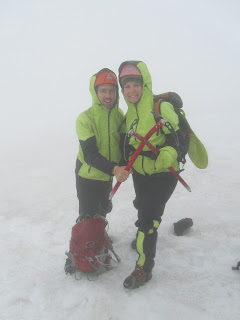As the Refugio is in the national park we only brought food for lunch and thought we would spoil ourselves for a few days with someone else's home cooking. An idea that paid dividends as we gorged on Asado Lamb, Chilean Paella and dressed Salmon. The refuge which is more of a lodge was built by the owner, Patricio, some 20 years earlier. It can accommodate only 14 guests but is a stunning home inside and out with large grounds including a forest sauna and access to a beach on the lake. Whilst here we did a couple of hikes up into the mountains, one seven hour leg stretcher that encompassed around eight different lakes and some fantastic views. The other a shorter but more strenuous trek which involved walking up 800m altitude in little over an hour. At the top however were some rewarding views of the surrounding volcano dotted landscape. The National Park is home to a multitude of flora and fauna, most famously the funky Monkey Puzzle Tree. Along with a lot of unidentifiable wildlife we also saw a snake, parrots, woodpeckers an untold amount of lizards and even a rogue cow halfway up the mountain trail.
In the evenings after dinner Patricio would bring out the guitar alongside a varied collection of other instruments. There was always a good eclectic assortment of music being played until the early hours amongst Patricio, his sons and whoever else fancied a go. We even got to witness firsthand some authentic Chilean dance alongside some live 'Panpipes of the Andes'.
It was a nice change of pace from the swarms of Chilean summer tourists who visit Pucon in February. Back in town we had spent our time enjoying the weather whilst we could down on the beach or a small park in front of the marina. The town centre is quite small but heavily geared for an influx of summer tourism with arty markets and nice restaurants.





































